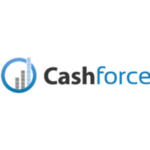Blockchain-as-a-Service: accelerator for adoption
| 04-06-2019 | Carlo de Meijer | treasuryXL
 Blockchain technology has attracted growing interest from various businesses from large corporates to SMEs. But a large scale adoption by corporates and others has long time been hindered by the lack of options. But that is changing.
Blockchain technology has attracted growing interest from various businesses from large corporates to SMEs. But a large scale adoption by corporates and others has long time been hindered by the lack of options. But that is changing.
When interacting with the blockchain they have now two options. They can either set up their node directly, thereby removing the “invisibility cloak” of blockchain. Or they can decide to let someone else do that for them. And here comes BaaS or Blockchain-as-a-Service in scope. BaaS or Blockchain-as-a-Service is comparatively a new blockchain technology, that can be easily integrated in existing corporate infrastructures.
The global Blockchain-as-a-Service Market is set for a rapid growth. According to a recent survey, the Blockchain-as-a-Service is expected to register a CAGR (Compound Annual Growth Rate) of over 15%, during the forecast period (2019-2024), reaching around USD 30,6 billion globally by 2024.
We are not surprised by the emergence of Blockchain-as-a-Service. This overall Blockchain-as-a-Service market has seen accelerated growth with the coming up of creative innovations for blockchain and a faster growing customer demand. The growing demand for this new way of delivering blockchain services is attracting a wide field of new providers in the BaaS market, offering gigantic entryways for advancement.
Why BaaS?
Why do businesses need Blockchain-as-a-Service? Blockchain technology is on rise and business are increasingly willing to adapt to this technology. So far, however, the impact of blockchain disruption has been rather limited.
The companies that really want to use it, may encounter a number obstacles. The resources and expertise needed to develop new blockchain technologies has been a major hurdle for businesses that want to adopt the blockchain.
Blockchain technology is rather knew and relatively unknown. The technical complexities and operational overhead involved in creating, configuring, and operating the blockchain, and maintaining its infrastructure, often act as deterrents to its mass adoption.
Corporates are still far away from understanding the future of blockchain technology and the complexity of setting up of blockchain networks. Its implementation in terms of any technological change entails organizational risks.
Blockchain requires huge investment when it comes to setting up infrastructure and maintaining it. It is much more resource intensive, as compared to traditional databases.
What is BaaS?
A Blockchain-as-a-Service platform is based on, and works similar to, the concept of Software as a Service (SaaS) model. It is a full-service cloud-based offering that enables customers including corporates to leverage cloud-based solutions to build and use their own blockchain applications and smart contracts and functions that will be hosted on the BaaS platform.
The BaaS platform would deal with the always confusing and labour-intensive back end activities for corporates and/or their business. They will provide all the necessary infrastructure and operational support to ensure that the blockchain applications run smoothly.
The platform will manage all the necessary tasks and activities to keep the infrastructure agile and operational. In other words, it allows the blockchain part of the technology to be relatively invisible for corporates.
Blockchain-as-a-Service providers are, therefore, key for large-scale blockchain adoption across businesses as they enable companies to adopt the blockchain without having to spend as much money as they would have to if they were to develop blockchain solutions on their own.
How does BaaS work?
BaaS would work similar to that of a web hosting provider. BaaS is like a blockchain module toolkit and utility system under the Blockchain Engine for which their users pay a fee.
In BaaS, an external service provider sets up all the necessary blockchain technology and infrastructure for a customer. By paying for a fixed BaaS subscription or consumption, a client pays the BaaS provider to set up and maintain blockchain connected nodes on their behalf. A BaaS provider thereby handles the complex back-end for the client and their business.
The BaaS operator also takes care of support activities like bandwidth management, suitable allocation of resources, hosting requirements, and provides security features like the prevention of hacking attempts.
Leveraging BaaS model, the client can now focus on their core job – the functionality of their blockchain – instead of worrying about infrastructure and performance related issues.
BaaS for who?
Blockchain-as-a-Service is ideal for organizations that wanted to outsource their technological aspects, and are not involved in understanding the working mechanism of the blockchain.
According to the earlier mentioned survey, the financial services industry is expected to occupy the largest market share. Blockchain-as-a-Service offerings are already revolutionizing this industry, as banks and financial service companies are among the most heavily invested enterprises exploring blockchain technology.
This is due to the many, highly valuable decentralized applications of blockchain technology, thereby giving rise to new business models in various areas, such as cross-border payments, remittance, exchanges, internet banking, trade finance, Know Your Customers (KYC), and risk and compliance.
The market is also gaining traction with SMEs that have not the sources to do that on their own. As these are increasingly working online, efficient blockchain services are increasingly required to secure the identity of digital entities and online authentication of personal identities, which drives the demand for Blockchain-as-a-Service offerings.
What may BaaS bring?
Allowing someone else to take care of the complex backend of blockchain ecosystem for corporates, allows corporates or their business to benefit from blockchain technology without really having to deal with blockchain technology.
Instead of creating and running their own blockchains, a business, large or small, can now simply “outsource” the technical complex work and focus on its core activities.
The BaaS format allows companies to familiarize themselves with blockchain technology before making conclusive business decisions about its use.
With BaaS as a cloud-based service, users will be able to develop their own blockchain based products like smart contracts, various applications and services without any setup requirement of the complete blockchain based infrastructure.
If BaaS speeds up, it can lead to real savings for companies. A study by Accenture found that blockchain technology could help banks reach cost savings to reach as high as 38 per cent, or around $12 billion.
Top BaaS providers
The potential of Blockchain-as-a-Service has been recognized by some of the world’s largest software and technology companies. The interest of many businesses in implementing blockchain and the real difficulties of doing so have triggered several tech companies and cloud providers to now offer Blockchain-as-a-Service (Baas) to businesses that prefer to outsource the development of blockchain solutions.
The list of leading Blockchain-as-a-Service providers is growing, illustrating the growth in the dynamic on-demand tech sector. End 2015, Microsoft became one of the first companies to develop this service. The company has been adding BaaS modules to their cloud-computing platform, Azure, that is focused on the Ethereum blockchain.
The Linux Foundation last year released Hyperledger Fabric 1.0, a collaboration tool for building blockchain distributed ledgers, such as smart contracts, for vertical industries. IBM has also built their own BaaS service, a Hyperledger Fabric BaaS system based on the Bluemix Cloud Platform. They are focused more on private consortium blockchains.
There are other big names as well that are betting on Blockchain-as-a-Service. Like Oracle Autonomous Blockchain Cloud Service, Amazon Web Services (AWS), HPE Mission Critical DLT and SAP Cloud Platform Blockchain. Of special note in this field is the work being done by R3. R3 has created Corda, a Distributed Ledger Technology (DLT) designed specifically to respond to the needs of financial institutions that use this technology.
Most recent BaaS platforms
Microsoft Azure Blockchain Service (ABS)
Microsoft this month announced the launch of Azure Blockchain Service, which is aimed to simplify the formation, management and governance of consortium blockchain networks. Azure, basically, offers Blockchain-as-a-Service (BaaS) by providing several easy-to-deploy, enterprise-ready templates for the most popular ledgers, including Ethereum, Quorum, Hyperledger Fabric, Corda and more.
Azure BaaS, in a nutshell, represents not just a public cloud hosting provider for distributed ledgers, but an organic and integrated low-cost, low-risk platform for building, delivering and deploying decentralized blockchain applications technology.
“Azure Blockchain Service deploys a fully-managed consortium network and offers built-in governance for common management tasks such as adding new members, setting permissions and authenticating user applications.” Microsoft
J.P. Morgan’s Ethereum platform, Quorum, will be the first ledger available in Azure Blockchain Service, giving both companies’ customers the ability to deploy and manage scalable blockchain networks in the cloud.
“Because it’s built on the popular Ethereum protocol, which has the world’s largest blockchain developer community, Quorum is a natural choice. It integrates with a rich set of open-source tools while also supporting confidential transactions, something our enterprise customers require.” J.P. Morgan
“Quorum customers like Starbucks, Louis Vuitton, and their own Xbox Finance team can now use Azure Blockchain Service to quickly expand their networks with lower costs, shifting their focus from infrastructure management to application development and business logic.” Mark Russinovich, chief technology officer at Microsoft Azure
Amazon Web Services (AWS)
Launching a managed blockchain service late last year, Amazon is now opening Amazon Web Services (AWS) for general availability. This new service is developed on top of open-source frameworks like Hyperledger Fabric and Ethereum.
Customers simply choose their preferred framework, add network members, and configure the member nodes that process transaction requests. Its Amazon Managed Blockchain takes care of the rest.
“Amazon Managed Blockchain takes care of provisioning nodes, setting up the network, managing certificates and security, and scaling the network. Customers can now get a functioning blockchain network set up quickly and easily, so they can focus on application development instead of keeping a blockchain network up and running.” Amazon
It is a fully managed service designed to help companies quickly set up blockchain networks of their own that can span multiple AWS accounts that are scalable and easy to create and manage and configure the software, security and network settings.
“This can be done with a few clicks in the AWS Management Console, doing away with the typical cost and difficulty of creating a company network”. Amazon
Already companies like AT&T Business, Nestlé and the Singaporean investment market the Singapore Exchange have signed on to use the company’s services.
Ardor (ARDR)
Ardor is one of the latest in the growing field of contenders for Blockchain-as-a-Service (BaaS) providers. It provides the blockchain infrastructure for businesses and institutions to leverage the strengths of blockchain technology without having to invest in developing custom blockchain solutions.
Ardor is a BaaS platform that will allow corporates and others to use the Nxt blockchain, an advanced blockchain platform. It separates security from functionality by creating multiple chains. Ardor offers a main chain that handles blockchain security and decentralization. It provides customizable child chains that come ready to use, out of the box, for various business applications.
When customers want to implement a new project on Ardor, they can create a child chain. The child chain holds all the functionality and customizability supported on the Nxt blockchain. However, it is still linked to the main chain and derives its security and decentralization from using the main chain for verification.
The developers of Ardor are the same company behind the open source Nxt project. Ardor however goes beyond Nxt to solve critical issues of blockchain growth, scalability, and customization. Ardor includes every feature supported by the Nxt blockchain, but it changes the architecture of how new blockchains get implemented.
Towards decentralised BAAS solutions
BaaS however has some limitations though. An inherent tension seems to exist between the decentralized promise of blockchain and the more centralized nature of Amazon’s and other providers fully managed BaaS services.
BaaS should be seen as a means to an end, and necessarily involves adding some centralization to blockchain, which is never ideal. The purpose of blockchain is however to have decentralized solutions to centralized problems. This could be the banks as much as it could be any trusted middleman.
What does the ideal version of BaaS look like? BaaS is an essential step to be able to bring blockchain mainstream. But in a perfect blockchain world, we would not have centralized BaaS.
It could possibly look like Ardor and Nxt, where BaaS is front-loaded into the fundamentals of the blockchain. Alternatively, MIMIR Blockchain Solutions are creating the world’s first Decentralized Ethereum Service Provider (DESP). They are using Proof of Stake mechanics to allow for decentralized BaaS. Instead of having one entity set up all the blockchain infrastructure for a corporate, MIMIR creates a system where the multitude of nodes can work together to share blockchain access to the growing number of corporates and others who want access to blockchain. Instead of relying on a centralized party to share blockchain access, MIMIR relies on a distributed model where all connected nodes can get paid to do the heavy lifting for people.
Forward thinking
The arrival of Blockchain-as-a-Service or BaaS is an interesting development in the blockchain ecosystem that is indirectly aiding the blockchain adoption across businesses. Definitely, creating, maintaining and managing a new blockchain solution will be easier with BaaS.
Though BaaS does still require one to rely on a centralized third party, it is a strong step towards bringing blockchain technology to the world. BaaS may be the necessary catalyst that can lead to a much wider and deeper penetration of blockchain technology across various industry sectors and businesses.
BaaS will set the blockchain future trends by making it more feasible and solving the existing problems of the industry. As more businesses look for convenient and cost-effective ways to leverage blockchain technology, it is likely that BaaS offerings will continue to proliferate.
“Taking the burden of difficulty out of the equation” will allow a wide range of businesses and industries to adopt blockchain into their existing platforms.
Though there is still a long way to go, for many companies, BaaS is – at this moment – the best way to begin the blockchain journey. Keeping an eye on the space can help corporates to choose the right BaaS provider for their business needs.

Economist and researcher





 CASHFORCE ‘S INTELLIGENT CASH FORECASTING ENGINE HELPS COMPANIES TO CREATE MORE ACCURATE FORECASTS BY LEVERAGING THE POWER OF ARTIFICIAL INTELLIGENCE.
CASHFORCE ‘S INTELLIGENT CASH FORECASTING ENGINE HELPS COMPANIES TO CREATE MORE ACCURATE FORECASTS BY LEVERAGING THE POWER OF ARTIFICIAL INTELLIGENCE.





